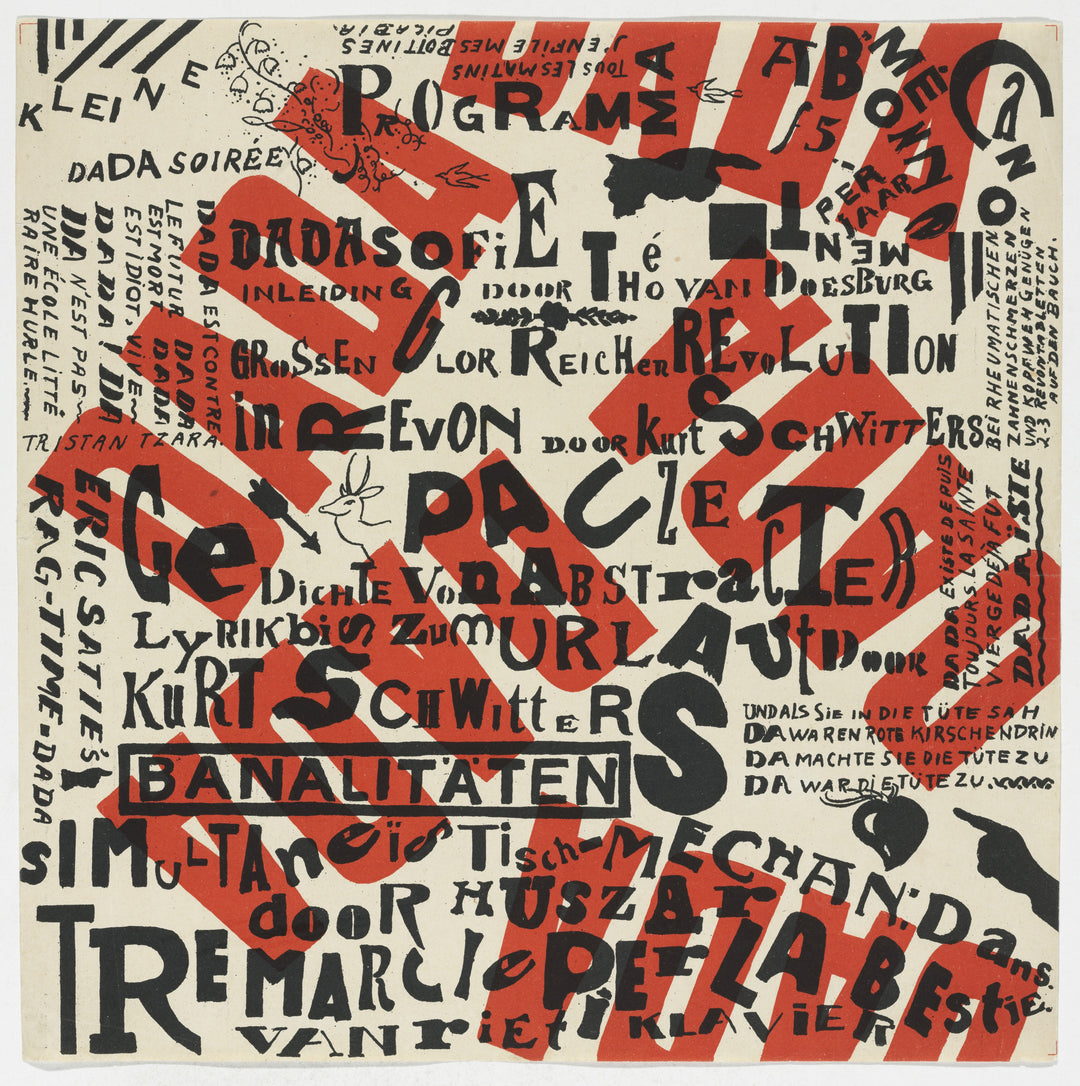
Small Dada Evening - Theo van Doesburg
| Author: | Van Doesburg |
|---|---|
| Title: | Small Dada Evening |
| Original location: | The Museum of Modern Art, New York, USA |
| Year: | 1922 |
In 1922, Theo van Doesburg and Kurt Schwitters broke with traditional artistic conventions by creating "Little Dada Soirée." The original title is "Kleine Dada Soirée," which is a blend of German and French. "Kleine" is German for "little," "Dada" refers to the Dadaist movement, and "Soirée" is French for "evening" or "night gathering." This is a clear example of multicultural expression within the Dada movement, which was international and combined elements from various languages in its art and manifestations. This is a poster that transcends its promotional function to become a declaration of principles for the Dada movement. From its conception, it was not just an announcement for a series of events in the Netherlands, but a work of art in itself—a visual provocation that challenged typographic hierarchy and aesthetic composition. The words are not arranged in neat lines, but float, cross over, and disintegrate, reflecting the chaotic and irreverent nature of Dadaism.
Van Doesburg, a proponent of De Stijl, saw abstraction as a form of order, but his encounter with Schwitters, creator of the Merz concept, led to a collaboration exploring the absurd and the spontaneous. Schwitters, eager to incorporate the everyday into art, transformed print into an experimental ground where typography not only conveyed information but also played with space, rhythm, and fragmentation. While Van Doesburg used his structural knowledge to balance the composition within its apparent anarchy, Schwitters introduced the intentional collapse of any traditional logic.
The poster is not just a design, but a statement against the rigidity of language, a reflection of a world that, after World War I, seemed to have descended into meaningless chaos. In this context, the work not only announced a series of artistic evenings, but also represented the breakdown of Western culture as it was known. In an ironic gesture, art appropriated disorder to turn it into its new aesthetic, challenging the notion that communication had to be clear, legible, and functional.
This work, although born in the era of the avant-garde movements, directly influenced the development of modern graphic design, anticipating the experimental techniques later adopted by movements such as Russian Constructivism and the Bauhaus. Its play with typography and composition also served as a reference for conceptual art and contemporary graphics, where text layout becomes an essential part of the artistic message.
Van Doesburg and Schwitters understood that typography should not be limited to an informative function; it could be, at the same time, structure and chaos, a game between meaning and provocation, a little soirée that never ceased to resonate in art history.